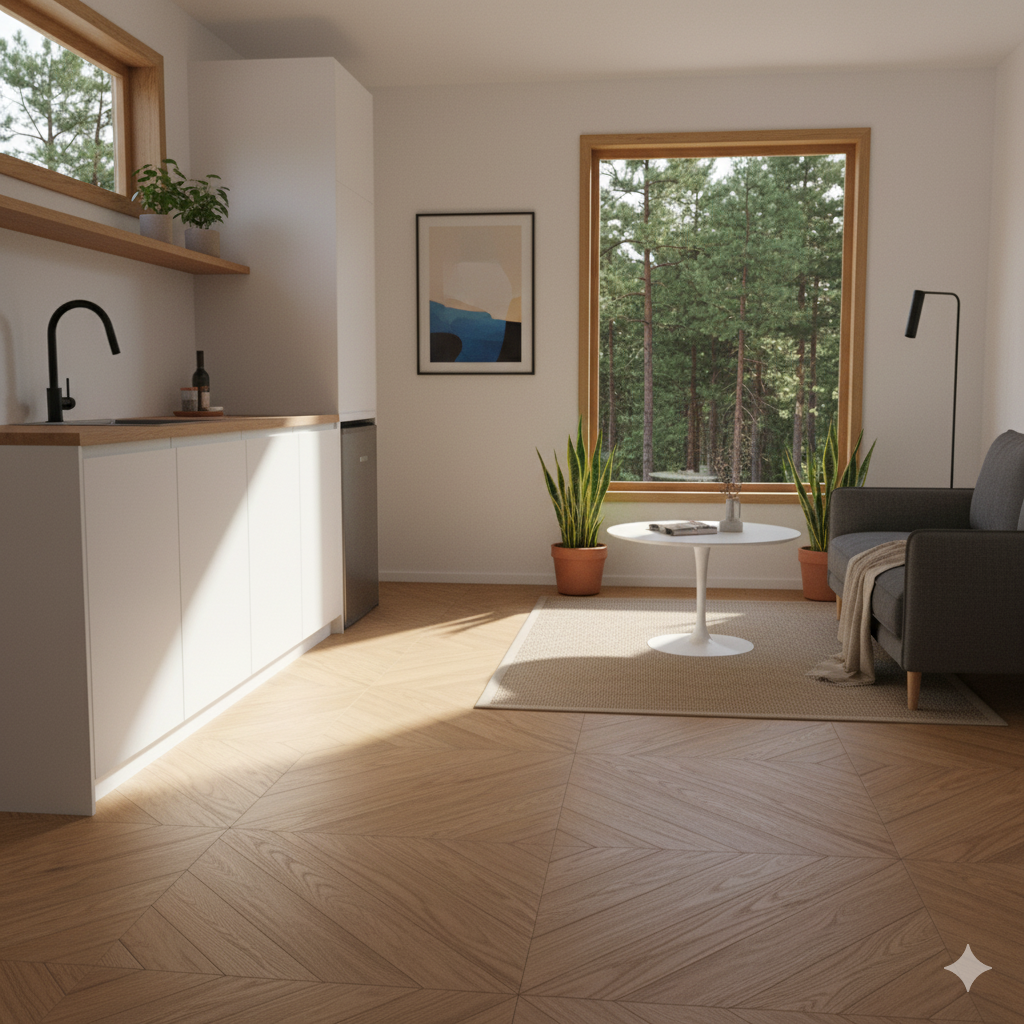Geometric Wood Flooring: Elevating Tiny Home Interiors with Style and Function
Tiny Home Markets
Archives
Geometric Wood Flooring: Elevating Tiny Home Interiors with Style and Function
SIGN UP FOR OUR NEWSLETTER
Geometric Wood Flooring: Elevating Tiny Home Interiors with Style and Function |
Innovative patterns and sustainable materials redefine small space design |
In the evolving landscape of interior design, geometric wood flooring has emerged as a transformative element, especially within the realm of tiny homes.
Homeowners are increasingly embracing patterns like herringbone and chevron to infuse their compact spaces with both aesthetic appeal and functional delineation.
According to recent design insights, these intricate patterns not only add visual interest but also create a sense of movement and depth, making small areas appear more expansive.
Incorporating such designs into modular interiors allows for a seamless blend of style and practicality.
For instance, a 280-square-foot dwelling can benefit from a diamond-patterned walnut floor that subtly separates the kitchen from the living area without the need for physical barriers.
Similarly, a checkerboard ash-and-oak entryway can create the illusion of distinct rooms, enhancing the overall spatial experience.
Beyond aesthetics, the choice of materials plays a crucial role in modern flooring trends.
The shift towards sustainable materials is evident, with options like bamboo and cork gaining popularity for their eco-friendly properties and natural appeal.
These materials not only contribute to environmental conservation but also offer durability and comfort underfoot.
Moreover, the herringbone trend has seen a resurgence, with its timeless appeal and ability to add sophistication to any space.
Incorporating such patterns into tiny homes not only enhances the visual appeal but also adds a layer of character and charm.
In essence, the integration of patterned wood floors in tiny homes exemplifies a harmonious blend of artistry and functionality.
By thoughtfully selecting patterns and materials, homeowners can transform their compact spaces into stylish, sustainable, and efficient living environments. |

